|
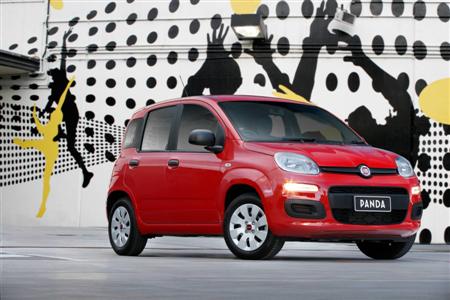 Fiat Panda Pop
Fiat Panda Pop
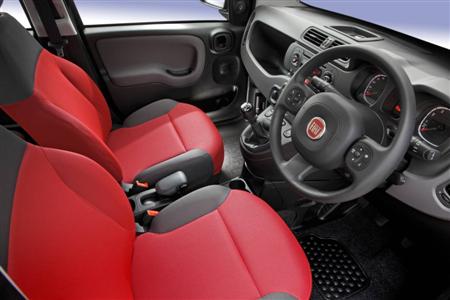 Fiat Panda Pop
Fiat Panda Pop
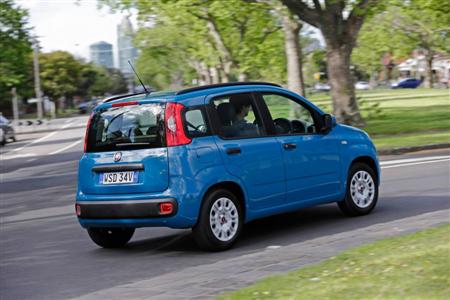 Fiat Panda Easy
Fiat Panda Easy
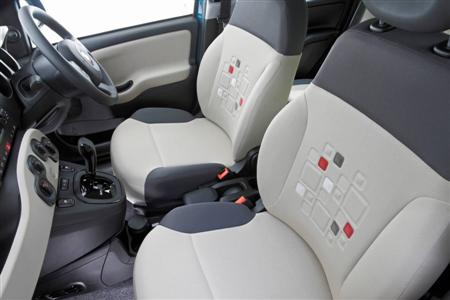 Fiat Panda Easy
Fiat Panda Easy
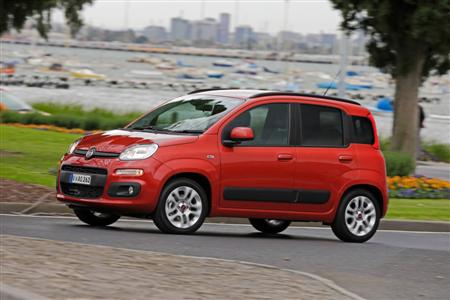 Fiat Panda Lounge
Fiat Panda Lounge
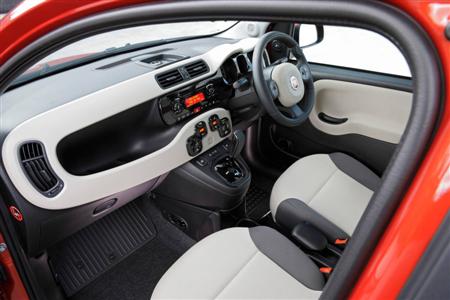 Fiat Panda Lounge
Fiat Panda Lounge
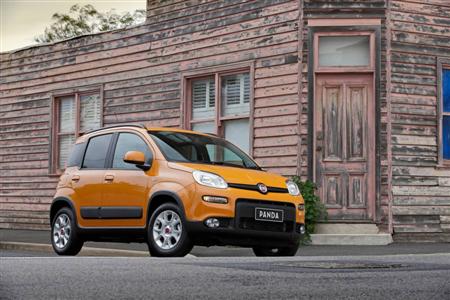 Fiat Panda Trekking
Fiat Panda Trekking
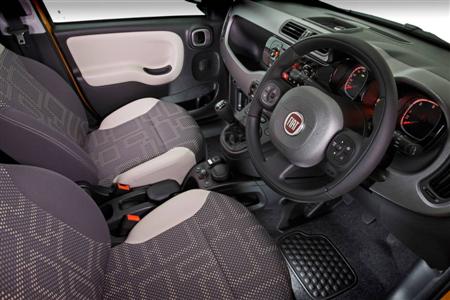 Fiat Panda Trekking
Fiat Panda Trekking
|
|
|
Fiat Panda released locally
Home >
News >
Fiat
Recent new car releases ..... here
Upcoming new car releases ..... here
29th October, 2013
- Third generation Fiat Panda, Italy’s best-selling car, makes its Australian debut
- Panda – Fiat’s benchmark small car delivers five-door, five-seat practicality with a spacious, flexible interior, yet
compact exterior
- Available with advanced safety and technology features, such as Low Speed Collision Mitigation, fuel saving
Start&Stop and integrated Blue&Me™ TomTom® navigation
Fiat Chrysler Group has released the Fiat Panda locally. It joins a growing Fiat vehicle range that includes the 500,
Punto, Freemont, Scudo, Ducato and Abarth models.
The new Fiat Panda is the latest version of a car that is renowned for its use of space, compact dimensions, fun style
and functionality. With its five doors and flexible interior, the new Panda builds on an enviable reputation for
convenience and durability that has been its hallmark since the original Panda was unveiled in 1980.
The third generation Panda, Europe’s top-selling supermini, is bigger, roomier, safer and more fuel efficient than its
predecessors. With the continued popularity of downsizing, the concept of an attractive, sophisticated city car with room
for five, an advanced range of economical engines and a host of features has never been more appealing.
The all-new Fiat Panda is just such a car, with an interior boasting greater flexibility and higher quality materials
than its predecessor, as well as some clever, cutting edge technologies that set a new benchmark for small cars when it
was launched in Europe. All of this is cloaked in a stylish, yet friendly new design and powered by some of the most
economical engines on the market today.
For the Australian market, the Panda line-up consists of four models – Pop, Easy, Lounge and the diesel-engined
Trekking. Three different engines are offered across the four-model Panda range, headlined by Fiat’s award-winning TwinAir
turbo powerplant.
This 875cc unit has the lowest carbon dioxide emissions of any quantity production petrol engine in the world - it has
a unique combination of power, flexibility and economy.
With 63 kW of power, 'combined cycle' fuel efficiency as low as 4.1 litres per 100km, this engine comes with a
characterful throaty sound track.
The TwinAIr turbo is joined by the latest evolution of the dependable 1.2-litre FIRE engine, which produces 51 kW and
features variable valve timing technology to blend power with economy. The new Panda is also available with a 1.3-litre
MultiJet2 turbo diesel engine. This second generation, compact unit features faster injectors than its predecessor,
making it quieter, more economical and cheaper to run.
The TwinAir and MultiJet engines are both fitted with the Start&Stop system, while all three Panda engines are
equipped with the Gear Shift Indicator (GSI) feature, which suggests to the driver when to change gear in order to
achieve the best fuel economy.
As well as the new engines, the new Panda has revised dimensions that make it longer, wider and taller than the
vehicle it replaces, with more space for passengers and their luggage, while still maintaining sufficiently diminutive
exterior dimensions to sit firmly in the city car category.
Most of the Panda’s growth in length is in the rear overhang, which has enabled an increase to luggage space as well
as more legroom for rear passengers. The new Panda is also 66 mm wider, which means it can seat three passengers in the
rear.
For improved passenger comfort and driver enjoyment there is all-new suspension and a body that is significantly more
rigid than its predecessor. These attributes further improve the Panda’s already impressive safety credentials, which
includes six airbags, ABS anti-lock braking with Brake Assist System (BAS), Electronic Stability Programme (ESP) and an
active anti-whiplash head restraint system as standard equipment across the range, making it one of the best-equipped
cars of its kind in safety terms.
Unusually for a car of this size, it also features a new safety innovation as standard equipment on the Lounge variant
called Low Speed Collision Mitigation – this advanced safety system reads the road ahead and when it detects an obstacle
in the vehicle’s path, applies the brakes automatically to avoid a collision.
But the Panda’s long list of practical features isn’t just reserved for the driver. To maximise space inside, the
all-new interior is packed with useful equipment, such as 14 storage compartments, including an open portal on the
dashboard.
As with all other models in the Fiat vehicle range, the new Panda is equipped with the Blue&Me connectivity system
to allow owners to sync music players and mobile phones with the vehicle, enabling handsfree control of devices using
either voice activation or steering-wheel mounted controls.
The new Panda is also available with the latest Blue&Me TomTom navigation device as an option, featuring a
4.3-inch touchscreen. However, all Panda models are fitted with the navigation device docking port as standard equipment,
which means they are all pre-equipped and ready to fully integrate the navigation unit with the vehicle’s audio system.
DESIGN
Since the Panda was first shown at the Geneva Motor Show in 1980, it has become a byword for substance, practicality
and user-friendliness.
Now entering its third generation, the new Panda combines the best of the first and second generation models but with
a 'character' all of its own, which allows Fiat to move the Panda legend forward once again.
Centro Stile Fiat designers have produced a new design that portrays an even stronger vision of utility and
'personality' than the car it replaces. In making this careful evolution of the famous model, the designers have
reinforced the Panda as a timeless classic, while also ensuring its position as an integral member of the Fiat
Automobiles family.
Comprehensive restyling has resulted in the Panda’s lines being more rounded than its predecessor. This softening,
combined with the absence of corners makes the car appear bigger than its city car dimensions might suggest. The new look
has also been designed to give the passenger compartment a welcoming and protective feel, with the additional benefit of
a drag coefficient of 0.32, one of the lowest in its class.
The softening of lines continues within the overall shape. Side windows have been contoured to maximise outward
visibility for added safety, while giving the cabin a perception of airiness. All windows have rounded-off corners and
the third window at the sides, a signature of the second-generation Panda, is less angular. These also merge with the
rear light clusters, which are set higher to reduce the possibility of damage from minor knocks, while making them more
visible to other road users.
Bumper strips that follow the rounded motif have been added for extra protection from parking knocks. In a nod to the
first generation car, there are side mouldings on Lounge and Trekking versions for a more rugged look, which is further
accentuated by the body kit on the Trekking model.
INTERIOR
The Fiat Panda has always been synonymous with style, practicality and useability, and this latest version builds on
these key ‘pillars’. Although just 3,650 mm long with a wheelbase of 2,300 mm, the newcomer can seat five people and has
one of the biggest luggage compartments in its class.
Functionality is another of the Panda’s hallmarks and the new model is no different, with the five-door design making
cabin access easy. Internal space is 26mm wider at the front and 5mm wider at the rear, while overall, the cabin is 20mm
longer than the previous model (which wasn't sold in Australia).
New slim seat technology yields 23mm more entry space at the front and 6mm at the rear, which provides more leg room
for back seat passengers, while those in the front benefit from improved seat travel that is now an impressive 210mm fore
and aft.
The rear seat backrest folds down to make 870 litres of boot space – 36 litres more than the second generation model –
as well as providing a luggage platform that’s more than two metres in length. In addition, the rear backrest can be
split in 60/40 configuration.
New seat material has also been fitted to the new Panda, using squares that are electronically welded to the backrests
in order to improve airflow between the occupant’s back and the seat, thereby improving comfort in warm weather.
Further improving cabin comfort when temperatures are high, the new Panda has an upgraded climate control system,
which centres on a revised control unit that ensures the required temperature is reached as quickly as possible – a
particularly desirable feature in extreme weather conditions.
Improvements have also been made to interior refinement and improving NVH, which has resulted in a 4dB noise reduction
compared to the previous generation model. This effectively means road noise has been halved.
The dashboard has undergone a radical design rework, which recalls the original Panda by boasting a roomy storage
compartment ahead of the front passenger, but there is also a more conventional locking glovebox in the lower section of
the dash.
Other clever internal innovations include redesigned door panels, allowing the speakers to be positioned higher, which
improves sound quality while also enabling the door pockets to be made wider and more usable. The hand brake has also
been redesigned by making it shorter, which has released storage space in front, behind and underneath the lever.
In total, there are 14 storage spaces in the new Panda, including a mix of open and closed, as well as a glasses
holder above the driver’s side window on Easy, Lounge and Trekking models.
TECHNOLOGY
Modern cars are about so much more than just getting around, they are also mobile platforms for the latest
communication technologies. Along with other models in the Fiat vehicle range, the new Panda is equipped with the latest,
award-winning Blue&Me™ infotainment system.
Based on Microsoft’s Windows Mobile for Automotive, Blue&Me allows Bluetooth equipped devices such as phones and
MP3 music players to be linked to the vehicle. Occupants can control the devices using voice activation via a display
panel that works in convert with a microphone in the roof, or through the steering wheel-mounted buttons.
|
|
|

Self-Catering Holiday
Accommodation in
Denmark, WA
..... more
|
|
|
By allowing drivers to keep their hands on the wheel and their devices securely stowed, the Blue&Me system is both
safe and easy to use. The latest generation voice recognition system allows immediate interaction because it does not
have to go through a learning phase, while phonebook contents can be transferred to the vehicle’s display panel.
Music stored on a USB device, media player or the latest Apple systems can be played through the sound system with
track information shown on the display panel.
Blue&Me TomTom® opens the door to additional connectivity by combining all the features of the regular
Blue&Me system with satellite navigation functionality. Featuring a 4.3-inch touchscreen display, this portable
navigation device slots into a holder in the middle of the dash so there are no unsightly wires or cables, yet the device
can be removed for safe keeping.
All Panda models are pre-equipped ready to support the optional TomTom portable navigation device and mounting
cradle.
Teamed with Blue&Me is Fiat’s widely acclaimed eco:Drive system that enables users to download information about
their driving to a USB stick. This information can then be uploaded to their computer and by accessing Fiat’s eco:Drive
website, where acceleration, deceleration, gear shifts and speed are analysed to give drivers a personal eco:Index of
between 1 and 100.
The eco:Drivers then receive tips on how to improve their performance and can become part of the eco:Ville on-line
community which, to date, has enabled 64,000 users to save 4,300 tonnes of CO2 by improving their driving
styles.
ENGINES
Fiat is at the cutting edge of combustion engine design and development – as a result the new Panda comes with a
choice of engines that lead the way in terms of performance, fuel consumption and emissions.
0.9-litre TwinAir Turbo
At the forefront of the powertrain line-up is Fiat’s TwinAir turbo. This 875cc unit combines Fiat’s revolutionary
MultiAir technology with two cylinders and a turbocharger.
The results are stunning, with its 63 kW power output representing a 10 per cent increase compared to a conventional
engine of the same size, while peak torque of 145Nm is up 15 per cent and the CO2 emissions rating of
99g/km represents an improvement of 10 per cent.
As with every other MultiAir engine, at the heart of this unit is a new electro-hydraulic valve management system,
which reduces fuel consumption to as little as 3.7 litres per 100 kilometres (Extra Urban Cycle – Dualogic transmission)
by controlling the intake of air directly via the inlet valves rather than the throttle. It enables airflow to be
managed cylinder by cylinder, cycle by cycle, phase by phase, according to the driver’s requirements.
By rigorously controlling the combustion process, pumping losses are reduced by around 10 per cent, while valve
control strategies are optimised to reduce emissions and boost driveability through improved throttle responses.
Fitting perfectly with the Panda’s compact size, the TwinAir takes downsizing to a new level by combining a small
capacity engine with a turbocharger, which improves performance and flexibility, particularly at very low revs, where
it’s far more responsive than a conventional normally aspirated engine.
1.2-litre Fire EVO II
More than 10 million units of the four-cylinder FIRE engine family have been produced and this durable, reliable
engine remains a point of reference in the category courtesy of its flexible architecture.
Now fitted with continuously variable valve timing to optimise valve opening and closing at all engine speeds, fuel
consumption in the new Panda with the latest generation 1.2-litre FIRE engine is a frugal 5.2 litres per 100 kilometres
(combined cycle). Yet it still delivers healthy power and torque outputs of 51 kW and 102 Nm respectively, while
producing 120 g/km of CO2 emissions.
1.3-litre MultiJet 2
Fiat’s latest small turbo diesel engine has compact proportions, measuring just 60cm in length by 70cm high and
tipping the scales at only 140kg.
But it’s big on performance with a power output of 55kW at 4,000 rpm and peak torque of 190Nm at 1,500 rpm, which
combine to deliver excellent flexibility.
The efficiency of the MultiJet2 engine is also big news, as it can manage a remarkable 3.9 litres per 100 kilometres
(combined cycle) in the new Panda with corresponding CO2 emissions of just 104g/km. This combination of
performance and economy is delivered courtesy of second generation MultiJet technology.
Faster injectors allow up to eight injections per cycle, resulting in greater speed, flexibility and precision in the
various combustion phases. The improved injection rate also enables two injections that are so close together as to
generate a continuous but modulated supply of fuel to the cylinders.
By improving the combustion process in this way, engine operation is quieter while particulate and nitrogen oxide
(NOx) emissions are also significantly improved, enabling the engine to meet Euro 5 standards.
The injectors are also simpler with 40 per cent fewer components, meaning they are more reliable than their
predecessors, as well as promising cheaper running costs.
Clever thinking
To further boost economy, the TwinAir turbo petrol and MultiJet2 turbo diesel engines apart are equipped with Fiat’s
Start&Stop system.
Specifically designed for city driving, Start&Stop switches the engine off when traffic requires the vehicle to
stop, while keeping all functions such as lights, climate control and the sound system operating. When it’s time to move
off again, releasing the brake pedal (Dualogic) or operating the clutch triggers the engine to re-start.
All cars with Start&Stop are fitted with a Gear Shift Indicator (GSI) as well, which offers a discreet prompt to
drivers to change gear at the optimum point to minimise fuel consumption. The TwinAir Turbo model also features an ECO
button on the dashboard. Pushing the button changes the engine electronics to a specific map that reduces torque to
100Nm and focuses on minimising consumption.
When drivers do need to visit the bowser, the Smart Fuel System is another large car feature designed to make city car
life as easy as possible. The classic fuel cap has been replaced by a fuel filler pipe that opens and closes
automatically when the pump is inserted and withdrawn. It reduces unpleasant gas emissions, any chance of fuel overflow
and also doesn’t allow petrol to be pumped into a diesel car, or vice versa.
The new Panda is also available with Fiat’s Dualogic transmission, which is an automated transmission that can also be
used as a manual. There is no clutch pedal, so to prompt gear changes in manual mode, the lever is pushed forwards or
backwards to shift either up or down. It’s a system that’s simple to use, gives the option of relaxed automatic gear
changing round town and more involving driver-prompted changes on the open road.
The software that tells the transmission when to perform automatic gear changes has also been optimised for fuel
efficiency, as part of the suite of fuel-saving technologies engineered into the new Panda.
DYNAMICS
In addition to being practical, comfortable and spacious inside, Panda has also been built to put a smile on the face
of keen drivers, while offering protection to its occupants despite its compact car dimensions.
The Panda has an exceptionally rigid body that utilises high resistance materials in 70 per cent of its construction.
The car also features a third load path, which provides more effective control of deformation during frontal impacts and
reduces the chance of penetration to the passenger compartment by transferring energy to the lower, more resistant parts
of the vehicle.
The improved rigidity combines with the latest technology to ensure comprehensive protection in the event of an
accident. Six airbags are fitted as standard equipment (dual front, front side and side curtain airbags) while front
seatbelts feature pretensioners and load limiters. The front seats are also equipped with an anti-whiplash restraint
system while the rear seats feature head restraints and combined Isofix/top-tether attachments for child seats.
ABS anti-lock brakes are fitted as standard, along with a Brake Assist System (BAS) for quicker, more powerful braking
to ensure drivers maximise the performance of the braking system. Electronic Stability Programme (ESP) is also standard
equipment, while a Hill Holder feature enables the driver to make effortless hill starts when taking off on inclines – it
continues to apply the brakes for up to two seconds after the brake pedal has been released to prevent the vehicle from
rolling backwards.
Low Speed Collision Mitigation (LSCM) is a large car safety feature that raises the bar in terms of what drivers can
expect from compact cars. Available on the high-spec Panda Lounge models, LSCM can recognise obstacles in the path of the
car and apply the brakes if the driver fails to do so. Depending on the speed, the system can either avoid obstacles
altogether or minimise the consequences of an impact.
The LSCM system combines Automatic Emergency Braking (AEB), Prefill and Brake Assist. The AEB is triggered by a
windscreen mounted laser sensor, which assesses whether the obstacle poses a threat. The sensor employs the same
principles as those used in astronomy to measure the distance between satellites.
The obstacle must be more than 40 per cent of the width of the vehicle and the angle of impact must be less than 30
degrees. In addition to applying the brakes automatically, engine torque is reduced if the accelerator pedal hasn’t been
released. The AEB works in tandem with Prefill, which primes the braking system for a more prompt response either when
the AEB system takes over or in a regular emergency stop.
The new Panda employs all-new suspension that’s been designed to improve comfort, handling and crash safety
performance. It’s been lightened using a lower arm, which has been constructed using ultra high-strength material – the
first time this method has been employed on a European-made car. It combines with a modular cross member made of low
thickness, high resistance steel sheets that work in conjunction with the third load path.
There is also a new split shock absorber mounting which, by transmitting loads to the body through two different
routes, better filters out road vibrations and improves acoustics compared to the previous model. The front suspension
also has a new anti-roll bar that is lighter, without compromising its rigidity, and has been connected to the shock
absorber to maximise the anti-roll effect.
New suspension bushes have been added front and rear to improve noise insulation without detracting from road
holding.
To enable the Panda to perform on the open road and in the tight confines of the city with equal aplomb, Dualdrive
electric power steering features a ‘City’ function. Push the dash-mounted button marked ‘City’ and assistance to the
steering is increased to facilitate parking manoeuvres and enable drivers to employ the tight 9.3-metre turning circle
more easily.
The default setting – which it returns to when the ‘City’ button is pressed again or when speeds exceed 35 km/h –
ensures the greater driving precision and steering wheel response that is more suited to higher road speeds.
FIAT PANDA PRICING*
# The starting price of $16,500# drive-away for the entry Panda Pop model is a limited time offer (conditions apply).
|
Model |
Engine |
Transmission |
Price* |
|
Pop |
1.2L FIRE
4cyl petrol |
5-spd manual |
$16,500#
drive-away price |
|
Easy |
0.9L TwinAir
2cyl petrol |
5-spd manual |
$19,000* |
|
Easy |
0.9L TwinAir
2cyl petrol |
5-spd Dualogic |
$20,500* |
|
Lounge |
0.9L TwinAir
2cyl petrol |
5-spd Dualogic |
$22,500* |
|
Trekking |
1.3L MultiJet
4cyl turbo diesel |
5-spd manual |
$24,000* |
NOTE:
* Manufacturer's List Price (MLP) excludes dealer delivery fees and the numerous statutory charges (commonly known as
on-road costs). Additionally, please note that all prices, fees and charges are subject to change without notice, as are
the specifications.
E&OE.
|